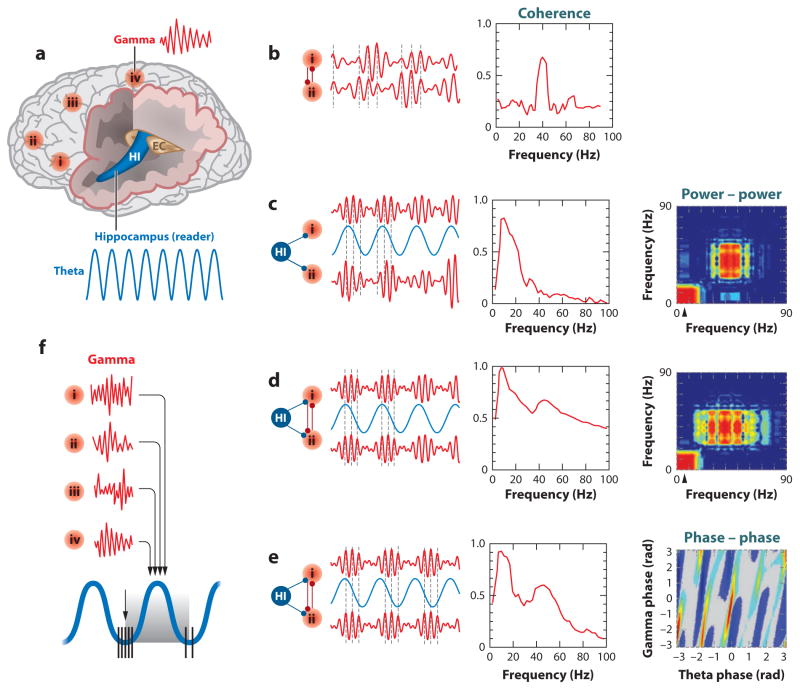Figure 5.
Oscillatory coupling mechanisms. (a) Schematic view of the human brain showing hot spots of transient gamma oscillations (i–iv) and theta oscillation in the hippocampus (HI); entorhinal cortex (EC). Oscillators of the same and different kind (e.g., theta, gamma) can influence each other in the same and different structures, thereby modulating the phase, amplitude, or both. (b) Phase-phase coupling of gamma oscillations between two areas. Synthetic data used for illustration purposes. Coherence spectrum (or other, more specific, phase-specific measures) between the two signals can determine the strength of phase coupling. (c) Cross-frequency phase-amplitude coupling. Although phase coupling between gamma waves is absent, the envelope of gamma waves at the two cortical sites is modulated by the common theta rhythm. This can be revealed by the power-power correlation (comodugram; right). (d) Gamma phase-phase coupling between two cortical sites, whose powers are modulated by the common theta rhythm. Both gamma coherence and gamma power-power coupling are high. (e) Cross-frequency phase-phase coupling. Phases of theta and gamma oscillations are correlated, as shown by the phase-phase plot of the two frequencies. (f) Hippocampal theta oscillation can modulate gamma power by its duty cycle at multiple neocortical areas so that the results of the local computations are returned to the hippocampus during the accrual (“readiness”) phase of the oscillation. a and f, after Buzsáki (2010); b–e, after Belluscio et al. (2012).

